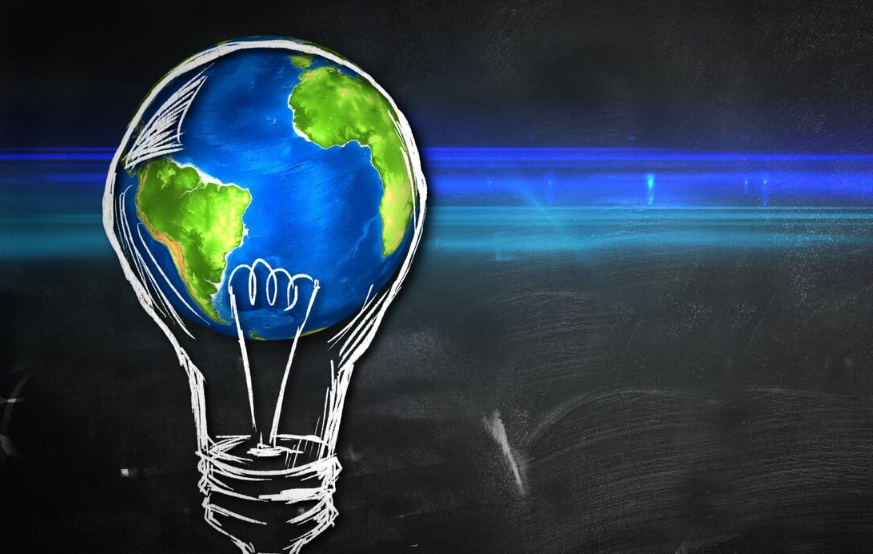In a world driven by technology, it’s easy to get caught up in the excitement of the latest gadgets, flashy apps, and cutting-edge devices. However, there is a growing movement of technology that, while not immediately visible, is quietly reshaping our lives. This invisible technology, often working in the background, has become an essential part of our daily routines and is revolutionizing industries in ways that might not be immediately apparent.
What is Invisible Tech?
Invisible tech refers to technologies that operate out of sight, often seamlessly integrating into everyday objects, systems, and processes. These technologies are not necessarily something we can hold or see, but their impact is deeply felt in the way we interact with the world.
Some examples include:
- Cloud Computing: While we interact with apps and services that rely on cloud storage, the cloud itself is invisible to the user. It quietly powers everything from email servers to streaming services, with no need for users to understand how or where the data is stored.
- Artificial Intelligence (AI): From recommendation algorithms on streaming platforms to predictive text on smartphones, AI works behind the scenes to improve user experiences without drawing attention to itself.
- 5G Networks: We may not see 5G towers or understand the technical details, but 5G is reshaping how we connect to the internet, enabling faster speeds and more reliable connections.
The Quiet Impact of Invisible Tech
Invisible technologies are not just limited to consumer experiences; they have far-reaching effects on industries and entire economies. Here’s how these technologies are quietly taking over different sectors:
1. Healthcare: Precision and Efficiency Behind the Curtain
In healthcare, invisible technologies like machine learning, data analytics, and cloud computing are revolutionizing patient care, but they often work in the background. For example:
- AI in Diagnostics: Machine learning algorithms analyze medical images and patient data to detect diseases earlier and more accurately than ever before. These AI-powered systems operate behind the scenes, helping doctors make faster and more informed decisions.
- Telemedicine: While telemedicine has become increasingly popular, the technology that supports remote consultations—such as encrypted video calls, cloud storage for medical records, and AI-driven health apps—often goes unnoticed.
These invisible technologies are making healthcare more efficient, personalized, and accessible, all without the need for flashy or overt tech displays.
2. Smart Cities: The Web of Connected Infrastructure
As cities become smarter, they are powered by a web of invisible technologies. IoT (Internet of Things) sensors embedded in streetlights, traffic signals, and waste management systems optimize everything from traffic flow to resource usage.
- Energy Management: Sensors track electricity usage in real-time, helping to balance supply and demand more efficiently. This reduces waste and ensures that energy is used where it’s needed most.
- Public Services: Smart waste management systems monitor trash levels and optimize collection routes, while smart water meters help conserve resources. All of these innovations rely on invisible tech that continuously gathers data to improve city life.
The integration of these systems creates an efficient and sustainable urban environment, often without residents ever realizing how much technology is working to keep things running smoothly.
3. Finance: The Unseen Forces of Digital Transactions
Invisible technologies are also making their way into the financial sector, transforming everything from banking to investment.
- Blockchain: While blockchain is often associated with cryptocurrencies like Bitcoin, its applications extend far beyond digital currencies. Blockchain is quietly reshaping industries by providing secure, transparent transaction records without the need for intermediaries like banks or governments.
- Fraud Prevention: AI-powered systems monitor transactions in real time, identifying potential fraudulent activity by analyzing spending patterns and detecting anomalies. This technology protects users, but it works silently behind the scenes, without requiring the user to do anything extra.
These invisible systems are making financial transactions safer, faster, and more efficient, without requiring constant user input.
4. Retail: Personalized Shopping Experiences
In retail, invisible technology is transforming the shopping experience in ways that are often unnoticed but deeply impactful.
- Recommendation Engines: E-commerce giants like Amazon and Netflix rely heavily on recommendation algorithms powered by machine learning. These systems analyze user behavior to suggest products or content that a customer is likely to enjoy, improving user experience and increasing sales.
- Inventory Management: RFID tags and IoT sensors track product movement and stock levels in real time, ensuring shelves are always stocked and customers have access to the products they want.
Although we don’t always see the technology at work, these invisible systems significantly enhance the efficiency of the retail industry and improve customer satisfaction.
5. Workplace Automation: The Rise of Unseen Productivity Tools
Invisible technologies have infiltrated the workplace, streamlining tasks and improving productivity in ways that are often unnoticeable to employees.
- Cloud Collaboration Tools: Software like Google Docs, Slack, and Zoom enable teams to collaborate in real-time, regardless of geographical location. These tools, built on cloud computing infrastructure, make remote work possible and efficient without employees needing to know the technical details.
- Robotic Process Automation (RPA): RPA automates repetitive tasks such as data entry, invoicing, and report generation. Employees interact with these systems indirectly, but the automation is a key driver of productivity behind the scenes.
These invisible technologies free up workers to focus on more creative and strategic tasks, while the technology quietly handles the mundane.
The Hidden Power of Invisible Tech
One of the key advantages of invisible technology is its ability to enhance our lives without us even realizing it. While visible gadgets and devices grab our attention, the true power of innovation often lies in the background. By removing complexity and simplifying processes, invisible tech allows us to focus on what truly matters—whether that’s connecting with others, running a business, or improving our health.
The shift toward invisible tech represents a broader trend in technology: one that focuses on seamless integration, where the user experience is enhanced without requiring extra effort or learning. The quieter, more subtle adoption of these technologies ensures that they become deeply embedded in our daily lives.
The Future of Invisible Tech
As technology continues to advance, we can expect to see even more invisible innovations that change the way we live and work. In the future, we may find ourselves surrounded by even more technologies that function without drawing attention to themselves—be it in the form of self-driving cars, AI-powered healthcare assistants, or smart home devices that learn and adapt to our needs.
The challenge for businesses and innovators will be to continue integrating these technologies in ways that benefit users without overwhelming them. The key to success will be in designing seamless experiences that work behind the scenes, making life easier, more efficient, and more enjoyable.
Conclusion
Invisible technology is quietly taking over, shaping industries and improving lives in ways that are often unnoticed but deeply impactful. From healthcare and finance to retail and smart cities, these technologies are transforming our world—sometimes without us even realizing it. As we continue to embrace the benefits of invisible tech, we can expect to see more innovations that enhance our lives in ways we never imagined possible. And, much like the invisible technologies that have come before them, these innovations will seamlessly integrate into the fabric of our daily routines, working quietly in the background to make the world a smarter, more efficient place.


